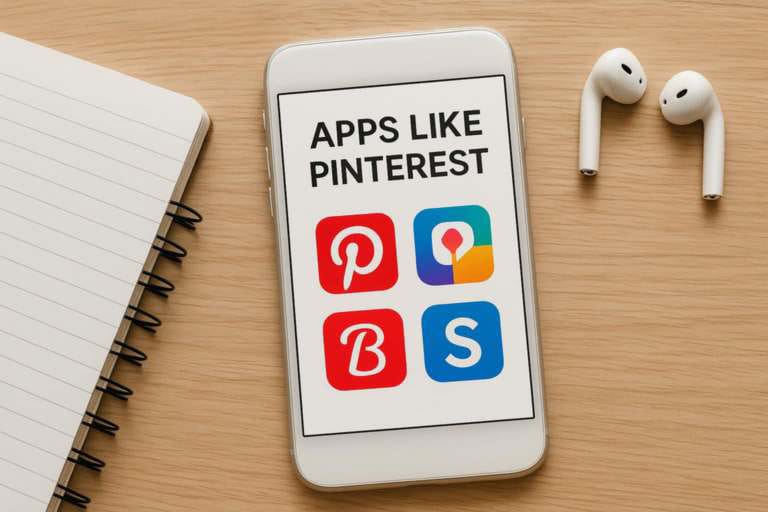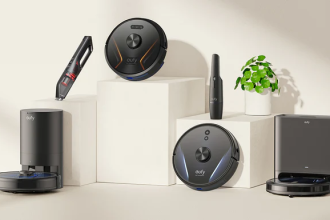Pinterest has been the go-to mood board paradise for creators since forever, right? With over 578 million monthly active users, it’s basically become the digital scrapbook we never knew we needed. But here’s the thing: sometimes you need to spread your creative wings beyond those endless Pinterest boards. Maybe you’re tired of the algorithm c78899hanges, feeling lost in the sea of pins, or just craving something fresh that speaks more directly to your niche.
- 1. Behance – The Adobe-Powered Portfolio Paradise
- 2. Dribbble – Where Design Dreams Come True
- 3. Flipboard – Your Personal Magazine Empire
- 4. Mix (formerly StumbleUpon) – The Serendipity Engine
- 5. Cosmos – The Aesthetic Creator’s Paradise
- How to Pick the Perfect Pinterest Alternative for Your Creative Needs
- Conclusion
Hence, we’re about to dive deep into the best paid (and some sneaky free) apps that’ll revolutionize how you discover, create, and share content. From design platforms to apps like Pinterest, these tools open up endless possibilities for inspiration and creativity.
1. Behance – The Adobe-Powered Portfolio Paradise
If Pinterest and LinkedIn had a baby raised by Adobe, it would be Behance. This platform isn’t just about collecting pretty pictures – it’s where serious creatives go to flex their skills and get discovered by brands who actually pay. With over 50 million members worldwide, Behance has become the holy grail for designers, photographers, and digital artists who want their work to be seen by the right people.
What makes Behance absolutely killer for influencers is its direct integration with Adobe Creative Cloud. You can literally push your projects straight from Photoshop or Illustrator to your Behance portfolio. The real magic happens when brands and agencies come hunting for talent. Unlike Pinterest, where your content might get lost in the shuffle, Behance actively promotes featured projects and helps creators get hired. It’s like having a 24/7 agent working for you.
Pros and Cons:
| Pros | Cons |
| Direct Adobe Creative Cloud integration | It can feel intimidating for beginners |
| Professional networking opportunities | Less casual browsing, more portfolio-focused |
| High-quality, curated content | Limited to creative/design niches |
| Potential for paid gigs and exposure | The basic plan is free but limited |
| 75% of users are creative professionals | Not ideal for lifestyle or general content |
| Built-in copyright protection | Slower content discovery than Pinterest |
2. Dribbble – Where Design Dreams Come True
Dribble is another major contender in the race of apps like Pinterest. With over 10 million designers calling it home, this platform has become the Instagram of the design world – except way more exclusive and way less saturated with random content.
What sets Dribbble apart is its “shots” system (not pins or posts, but shots). Each shot is like a carefully crafted window into a designer’s process, and the community engagement is off the charts. Designers don’t just post and ghost – they share their workflows, give feedback, and actually help each other level up.
Pros and Cons:
| Pros | Cons |
| Highly engaged professional community | Design-specific (not for all content types) |
| Job board with high-paying opportunities | Invitation-only for posting (initially) |
| Pro members get 300% more visibility | Can feel elitist to newcomers |
| Excellent for building design credibility | Limited free features |
| Clean, distraction-free interface | Smaller user base than Pinterest |
| Quality over quantity approach |
3. Flipboard – Your Personal Magazine Empire
Flipboard is what happens when someone says, “What if we made content curation actually desirable?” This platform transforms the way you discover and share content by turning everything into a sleek, magazine-style experience that your audience will actually want to flip through.
You can create your own magazines (basically curated collections) that position you as a thought leader in your niche. Fashion influencer? Create a weekly style trends magazine. Tech creator? Curate the latest innovations. The platform pulls content from major publications AND independent creators, giving you endless material to work with.
What really makes Flipboard shine is its ability to drive serious traffic back to your blog or website. Content marketers are obsessed with it because it’s not just about pretty pictures – it’s about meaningful engagement with articles, videos, and long-form content.
Pros and Cons:
| Pros | Cons |
| Magazine-style curation builds authority | More text-heavy than visual platforms |
| Excellent for driving website traffic | Less suitable for pure visual inspiration |
| Mix of professional and user content | Smaller creator community |
| Great for establishing expertise | Limited design customization |
| Collaborative magazine features | Focus on articles over images |
| Strong algorithm for content discovery |
4. Mix (formerly StumbleUpon) – The Serendipity Engine
Remember StumbleUpon? That addictive rabbit hole of random internet discoveries? Well, it’s back as Mix, and it’s basically Pinterest’s cooler, less predictable cousin. This platform is all about that “I didn’t know I needed to see this” vibe that made the internet fun in the first place.
Mix uses some seriously smart algorithms to learn what makes you tick, then serves up a personalized feed that gets better every time you use it. However, it’s not oversaturated with AI-generated content (unlike some platforms). You’re getting real, authentic discoveries that can spark genuine creative inspiration.
Pros and Cons:
| Pros | Cons |
| Superior content discovery algorithm | Less focused than niche platforms |
| Less AI/spam content than competitors | Smaller user base than Pinterest |
| Wide variety of content categories | Limited monetization opportunities |
| Great for finding unique inspiration | Not ideal for portfolio building |
| Easy collection creation and sharing | Basic interface compared to others |
| Free to use with full features | Less professional networking |
5. Cosmos – The Aesthetic Creator’s Paradise
Cosmos recently topped the App Store in Graphics & Design, adding over 100,000 users who are all about that calm, curated life. It’s the anti-chaos platform – no likes, no comments, just pure visual zen.
What makes Cosmos absolutely perfect for influencers is its “clusters” system – these are hyper-curated collections that feel more like art installations than boards. The concept is minimalist perfection, which means your content won’t get lost in a sea of noise. It’s quality over quantity, and your audience will notice the difference.
For creators who are tired of the Pinterest hustle and want something more sophisticated, Cosmos is like finding a secret speakeasy in the world of visual platforms.
Pros and Cons:
| Pros | Cons |
| Stunning, minimalist interface | Newer platform, smaller community |
| No distracting social features | Limited to visual content |
| High-quality, curated content only | Less diverse content than Pinterest |
| Advanced organization with clusters | No commenting or direct engagement |
| Perfect for aesthetic-focused creators | May be too niche for some creators |
| Calm, focused browsing experience |
How to Pick the Perfect Pinterest Alternative for Your Creative Needs
Alright, so now you’re probably thinking, “This is all amazing, but how do I choose?” Let’s break it down like we’re having coffee and I’m giving you the real tea on picking your platform soulmate.
1- First, ask yourself: What’s your content superpower?
If you’re all about that visual portfolio life and want to attract high-paying clients, Behance or Dribbble should be your go-to. These platforms scream “I’m a professional” louder than anything.
However, if you’re a thought leader who loves curating content and establishing expertise, then Flipboard or Pearltrees can be your choice. These platforms let you flex your knowledge muscles while building authority in your niche.
2- Consider your audience’s vibe
Something most creators miss is that your platform choice should match where your audience’s head is at. If your followers are design nerds who geek out over typography, they’ll eat up your Dribbble shots. But if they’re more about lifestyle inspiration and mood boards, Cosmos or Designspiration might resonate better.
3- Budget reality check
We all want all the features, but let’s be smart about it. Most of these platforms offer killer free tiers that’ll get you started. Test drive them for a month before dropping cash on premium features. That said, spending $5-10/month on a platform that could land you a $5,000 brand deal? That’s not an expense, that’s an investment.
4- The multi-platform strategy
You don’t always have to choose just one. You can use one platform for your portfolio, and another for daily inspiration. Different platforms serve different purposes, and combining them can give maximum impact. Just don’t spread yourself so thin that you’re posting garbage everywhere – quality over quantity always wins.
5- The engagement factor
Some platforms are about showcasing, others are about engaging. If you thrive on community feedback and collaboration, Dribbble’s comment system and design challenges will fuel your creative fire. But if you prefer to curate in peace without the social pressure, Cosmos or mymind might be more your speed.
Conclusion
Pinterest isn’t going anywhere – it’s still the heavy hitter of visual discovery, and for good reason. But as creators and influencers, we can’t afford to put all our creative eggs in one basket. The platforms we’ve explored today, along with some of the best AI apps, aren’t just alternatives; they’re opportunities to reach new audiences, showcase different facets of your creativity, and maybe even discover parts of your creative self you didn’t know existed.















